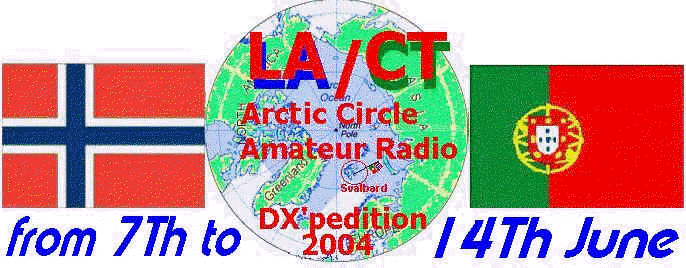



Polar Circle Amateur Radio Adventure
|
Polar Circle Amateur Radio Adventure |
| Propagation Prediction for JUNE 2004 The present sunspot cycle, begin to decline. For the last months for which smoothed sunspot numbers are available, solar activity remained practically constant between a level of 106-107.This means that solar activity this coming summer may run not on very good conditions. Typical summertime propagation conditions are forecast for the HF amateur radio bands during June. Optimum frequencies for DX propagation arte expected to be somewhat lower during most of the daylight hours, and somewhat higher during the late afternoon, early evening and nighttime hours, than they were earlier this spring. Short skip openings, up to distances of at least 1900 Kms, are expected to increase considerably on all HF bands as a result of more frequent, more intense and widespread sporadic "E" ionization.
Here you can find predictions made by ON4UN for JUNE, maybe can help you to find out the better conditions to work.
The Bands 160M and 80M is no good at this time of the year. The sun don't set for about 2 months. On 160 Meters intense solar absorption during this month will prevent ionospheric reflection during most of the daylight hours.
On 80 Meters High static level and few hours of darkness are also expected to restrict DX openings on this band during June, but some fairly good one should be possible on other areas NOT ON ARCTIC CIRCLE due that sun don't set.
On 40 Meters DX Conditions are expected to decline during this month because of a seasonally high noise level, and a fewer hours of darkness in the northern hemisphere. Some fairly good openings , however should be possible to many areas of the world during the hours of darkness and sunset and sunrise periods.
20 Meters this band is expected to remain open to one DX area or another practically around-the-.clock during June. It should be the best Band for DX openings during the early evening hours, through the hours of darkness and sunrise period. Exceptionally high signals levels are expected during periods of optimum conditions. Numerous and widespread short-skip openings are expected over distances ranging between 500 Kms to 3500 kms . During late afternoon and early evening hours propagation conditions should be optimum for both short skip and DX openings, resulting in an exceptionally high level of interference.
15 Meters band should be optimum band for DX openings during much of the late afternoon and early evening hours. Good-to -excellent DX opening are forecast to most areas of the world during the daylight hours , with excellent openings expected to tropical and southern regions well into the evening hours as well.
10 Meters. A sharp seasonal decrease is expected in a DX propagation conditions on this band during June nad the summer months.
Learn more about Propagation I am often asked to recommend a good text on Webs on HF propagation. Where discusses theory in a relatively simple manner, and tells how to use propagation data for predicting bands openings. In the past we've to found information on books, and Magazines. Nowadays we've internet and lot of software can help us to get lot of information about the best way we can have a normal QSO with a DX station. If you have difficulty please look for any browser and check Propagation, but look follow on some links.
Propagation Data If the amateur has in his shack a wealth of propagation charts or just on or two of them, he will be much better off than the other amateur who doesn't have any. By a simple connection through internet to the Institute for Telecommunication Sciences and Astronomy, you can receive regularly prediction muf's for the upcoming days and other information. We use this discussion to record suggestions about the features that should or shouldn't be included in our software, and to engage in a public dialog regarding the merits of various requests for enhancements. Anyone is welcome to submit suggestions. This page contains links to all of the public discussions for this project. We maintain a separate protected web for internal project discussions and notes. Here is a good place to describe a list of your hobbies, projects or interests. This page contains links to other Very Interesting places for this project. We maintain a separate protected web for internal project discussions and notes. W6EL PropTM
Copyright or other proprietary statement goes here. |